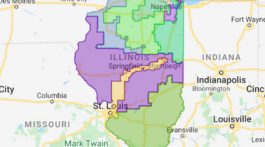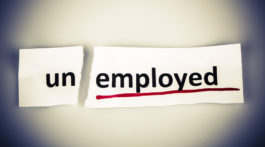by Michael Hicks
One way to analyze the impact of technological change in our economy is to look at history. In so doing, we might learn something useful about the challenges we face today. To illustrate this, let me offer some facts about one of Indiana’s great industries, and the change that has swept through it over the past century or so.
Technology has played an outsized role in job losses in one Hoosier industry (I’ll reveal which industry later). Indeed, thanks to machines including the internal combustion engine, to the skill of chemists and to the innovations of GPS satellites, Indiana alone has 1.5 million fewer jobs than we would otherwise have in this industry. This technological gain has been devastating to many related industries and job losses have been clustered among some of our most defenseless demographic groups. Whole communities have disappeared and places in Indiana have returned to virtual wilderness because of the job losses due to productivity gains in this industry. One might suppose this a dark state of affairs.
However, there is good news. As it turns out, last year was likely was a record for this industry, with the inflation-adjusted value of production higher than ever before. The industry I am referring to is agriculture.
Still, that’s a lot of lost jobs that fell heavily on the 14-18 year age group. Back in 1916 most Indiana teens didn’t need to go to high school, instead they could count on a farm job right after eighth grade. A century ago, farming was a solid middle-class job, and 1.5 million of these jobs evaporated in just a century. Now barely 12,000 Hoosiers toil on farms. So, are we better off? Well, yes.
Since the turn of the 20th century, when maybe half of Hoosiers worked in agriculture, we are better off in ways that were unimaginable at the time. The future is likely to hold the same head spinning change. In 1900 lifespans in the Midwest hovered around 50 years. Today they push 80, and are likely under-estimated since they are calibrated on current technology. That means the average age of someone who died in 1900 was less than 50, while it is likely that half of American kids born in 2000 will live to see 2100.
All that technology accompanied other changes as well. Things like water purification and sanitary sewers saved lives, so did antibiotics and the other medical advances of the century. None of these things would have occurred without a huge shift of resources from raising food to other activities. In 1900 the typical household spent 44 percent of their income on food, within a century it was 14 percent. Obesity, not hunger is the mark of poverty today.
In just one century, one-third of earnings were shifted from food to other items of consumption. Moreover, these incomes grew by more than six-fold when adjusted for inflation. We now buy things that were available only to the very rich in 1900. Things like household plumbing, restorative dentistry, obstetrical services, and a college education were the trappings of only the very affluent in 1900. Things like wireless internet, talking movies, air transportation or non-surgical cancer treatments were unavailable at any price.
Today, an American family of three at the poverty line enjoys a standard of living nearly five-times what the average American family had a century ago and lives 50 percent longer. This is the very definition of progress, and by the way, we more than made up for those lost 1.5 million jobs in the past half century alone.
Progress through technology and automation does more than allow us to consume more goods and services, which is a laudable goal in itself. The real benefit of economic growth is that it frees up the creative and innovative minds of people who might otherwise spend much of their lives plowing behind a mule. The transition isn’t painless, but so far has always been worth the costs. We should expect that of the next 100 years.
Michael J. Hicks, PhD, is the director of the Center for Business and Economic Research and the George and Frances Ball distinguished professor of economics in the Miller College of Business at Ball State University.














